Museums: US Hall of Fame to Induct Eight
The U.S. Ski and Snowboard Hall of Fame has elected eight honorees for induction at a banquet in Park City, Utah, on March 23, 2024. The new class includes:
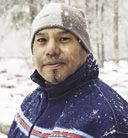 Ross Anderson A Native American speed skier, Anderson holds the record as the fastest American on skis, hitting a speed of 154.060 mph in 2006 at Les Arcs, France. A native of Durango, Colorado, he grew up as a ski racer and ski jumper, discovering speed skiing in 1994. He won the bronze medal at the 2005 World Championships and is an eight-time national champion. (See the July-August 2023 issue of Skiing History for more about Anderson.)
Ross Anderson A Native American speed skier, Anderson holds the record as the fastest American on skis, hitting a speed of 154.060 mph in 2006 at Les Arcs, France. A native of Durango, Colorado, he grew up as a ski racer and ski jumper, discovering speed skiing in 1994. He won the bronze medal at the 2005 World Championships and is an eight-time national champion. (See the July-August 2023 issue of Skiing History for more about Anderson.)
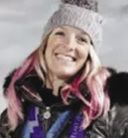 Shannon Bahrke Known for her pink hair and as the exuberant face of moguls skiing, the Lake Tahoe native won Olympic silver at the 2002 Winter Games, then came back from injuries to win Olympic bronze in 2010. In a 12-year career with the U.S. Ski Team, Bahrke won the 2003 World Cup moguls title, claimed 27 World Cup podiums (including seven victories) and earned six U.S. titles. She competed in three Olympics and was on six World Championship teams.
Shannon Bahrke Known for her pink hair and as the exuberant face of moguls skiing, the Lake Tahoe native won Olympic silver at the 2002 Winter Games, then came back from injuries to win Olympic bronze in 2010. In a 12-year career with the U.S. Ski Team, Bahrke won the 2003 World Cup moguls title, claimed 27 World Cup podiums (including seven victories) and earned six U.S. titles. She competed in three Olympics and was on six World Championship teams.
 Jeff Brushie Vermont’s Brushie had one of the most successful contest careers of any American snowboarder. In an era before the X Games, and before snowboarding was an Olympic sport, he was the most successful pro snowboarder of his generation, winning more than 20 major contests, including three world championships. In the 1990s, his crossover appeal to mainstream media on MTV and ESPN was America’s first real look into snowboarding style and culture.
Jeff Brushie Vermont’s Brushie had one of the most successful contest careers of any American snowboarder. In an era before the X Games, and before snowboarding was an Olympic sport, he was the most successful pro snowboarder of his generation, winning more than 20 major contests, including three world championships. In the 1990s, his crossover appeal to mainstream media on MTV and ESPN was America’s first real look into snowboarding style and culture.
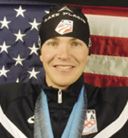 Billy Demong As a Nordic combined athlete and a team leader, Demong won the first Olympic gold medal by an American Nordic skier, inspiring the U.S. Nordic combined team to an unprecedented four medals at the 2010 Vancouver Winter Games. He grew up near Lake Placid, inspired by the 1980 Winter Games there. In a career lasting 16 seasons, he won Olympic gold and silver, four World Championship medals (including one gold) and earned 21 World Cup podiums with nine wins.
Billy Demong As a Nordic combined athlete and a team leader, Demong won the first Olympic gold medal by an American Nordic skier, inspiring the U.S. Nordic combined team to an unprecedented four medals at the 2010 Vancouver Winter Games. He grew up near Lake Placid, inspired by the 1980 Winter Games there. In a career lasting 16 seasons, he won Olympic gold and silver, four World Championship medals (including one gold) and earned 21 World Cup podiums with nine wins.
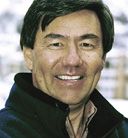 Hank Kashiwa World Cup skier and Olympian Kashiwa went on to win the 1975 World Pro Skiing Championship, then parlayed his success into a thriving career as a skiing entrepreneur. Together with brother Bucky, he founded Volant, which went on to become the largest American ski manufacturer of its era with its innovative stainless-steel cap models. After the sale of Volant to Atomic, Kashiwa led marketing efforts for Montana’s Yellowstone Club, the world’s first private ski and golf community, which now boasts 875 families in its private membership.
Hank Kashiwa World Cup skier and Olympian Kashiwa went on to win the 1975 World Pro Skiing Championship, then parlayed his success into a thriving career as a skiing entrepreneur. Together with brother Bucky, he founded Volant, which went on to become the largest American ski manufacturer of its era with its innovative stainless-steel cap models. After the sale of Volant to Atomic, Kashiwa led marketing efforts for Montana’s Yellowstone Club, the world’s first private ski and golf community, which now boasts 875 families in its private membership.
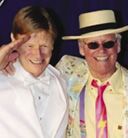 Jake and Dave Moe Skiing was at the height of its boom years in 1971 when the Moe brothers introduced the world to Powder magazine. Under the mantra “Powder to the People,” they offered a new, more independent look at skiing with the photos and words on their pages, literally changing the direction of the sport as skiers were pushed to discover their own independence on the mountain. As publisher and editor, the Moes had a knack for finding the wordsmiths and photographers to tell the story of skiing in a new way.
Jake and Dave Moe Skiing was at the height of its boom years in 1971 when the Moe brothers introduced the world to Powder magazine. Under the mantra “Powder to the People,” they offered a new, more independent look at skiing with the photos and words on their pages, literally changing the direction of the sport as skiers were pushed to discover their own independence on the mountain. As publisher and editor, the Moes had a knack for finding the wordsmiths and photographers to tell the story of skiing in a new way.
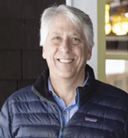 Les Otten The resort developer had a profound impact on the entire industry as an innovator and visionary. He parlayed a college gig as a ski instructor to eventually own nine ski areas; he built American Ski Company into a publicly traded resort leader. He innovated teaching techniques to make entering the sport easier, focused on the quality of snow making and recognized the benefits of shaped skis early on. Never satisfied with the status quo, his pioneering efforts transformed the industry into what it is today.
Les Otten The resort developer had a profound impact on the entire industry as an innovator and visionary. He parlayed a college gig as a ski instructor to eventually own nine ski areas; he built American Ski Company into a publicly traded resort leader. He innovated teaching techniques to make entering the sport easier, focused on the quality of snow making and recognized the benefits of shaped skis early on. Never satisfied with the status quo, his pioneering efforts transformed the industry into what it is today.
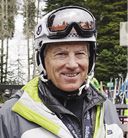 Mike Porter In a career that spanned a half century, Porter became one of the world’s most influential ski educators. He served the Professional Ski Instructors of America National Alpine Team as a member and, later, as its longest-tenured head coach, also helping to found the American Teaching System. His work helped bring global recognition to PSIA-AASI, as he oversaw much of the U.S. content presented every four years at Interski. With his in-depth research on ski racing, he was also pivotal in bringing coaches and instructors together.
Mike Porter In a career that spanned a half century, Porter became one of the world’s most influential ski educators. He served the Professional Ski Instructors of America National Alpine Team as a member and, later, as its longest-tenured head coach, also helping to found the American Teaching System. His work helped bring global recognition to PSIA-AASI, as he oversaw much of the U.S. content presented every four years at Interski. With his in-depth research on ski racing, he was also pivotal in bringing coaches and instructors together.
